

One Saturday October 28 (2023) we went out with Francesco, Doni, and Flo to take pictures. The primary picture-taker was Flo, who has a natural artistic talent and has trained her eye to see compositions. We also took a few pictures with our smartphones. The first of the two spots we visited was Monastero di Montebello. This was a monastery of an order called the Jeronimite friars (known in Italian as Ordine di San Girolamo). The site was established in the late 1300s, but abandoned in 1933 when the monastic order was temporarily dissolved by the church. In the 1970s, a local man named Gino Girolomoni established an organic farming cooperative here. Girolomoni (in addition to having a name very reminiscent of the monastic order) is considered to have been one of the pioneers of organic agriculture in Italy. He built a modern facility just down the road, which is where they produce organic pasta. The historic monastery building itself is used for tourist stays and events. You can buy their pasta, although it looks like the name is changing to Girolomoni in honor of the founder.
The building is a large square, with a courtyard in the center, and a rectangular building stuck on one side. We do not know the history of that attached section; it has a large arched entry that has been closed and is mostly obstructed by the rest of the building. The building was not open when we visited, so we only saw the exterior of it. It was clearly closed for the season.


The religious history of this location shows in the large outdoor cross. Francesco demonstrates the historical use.
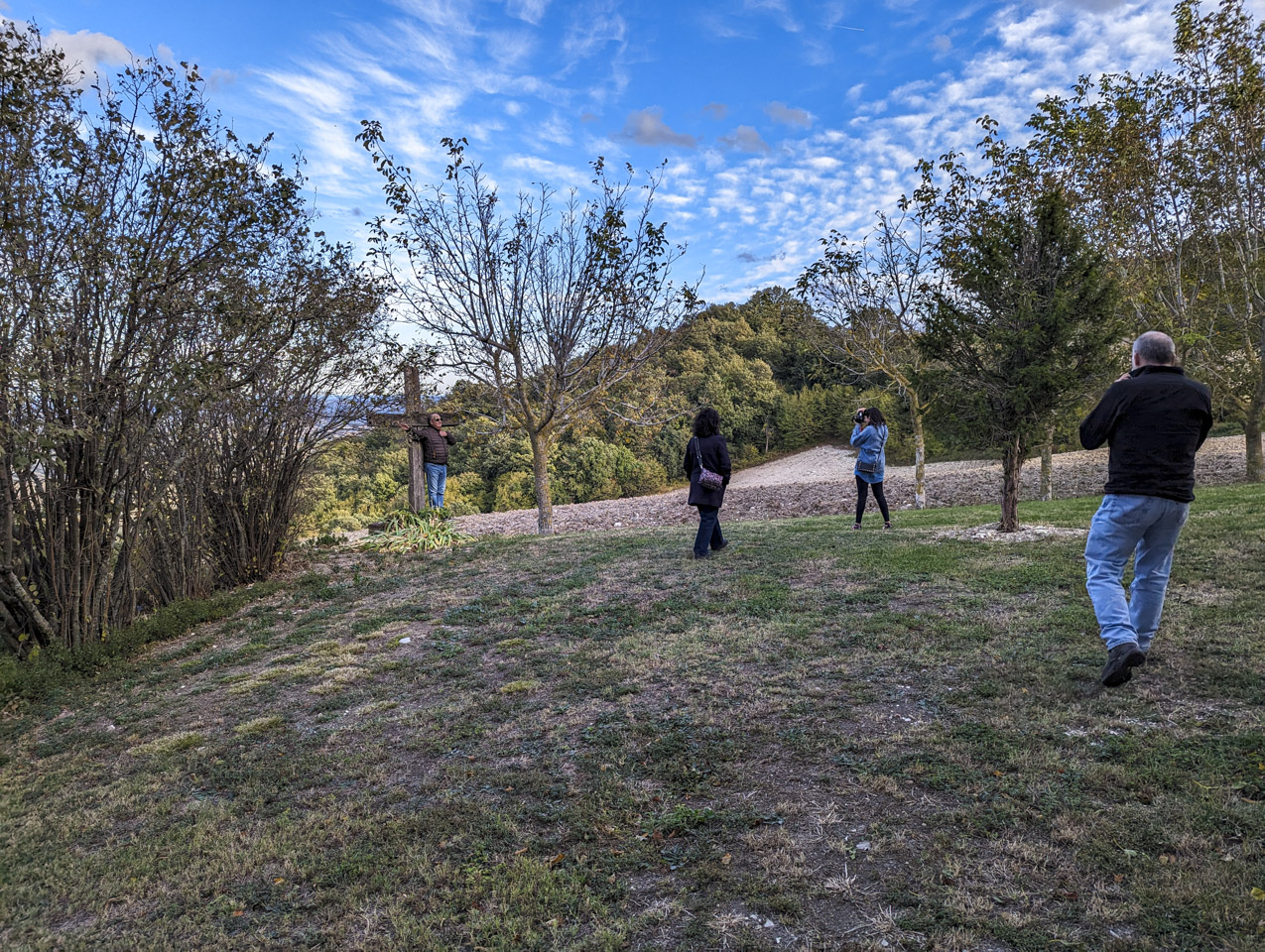
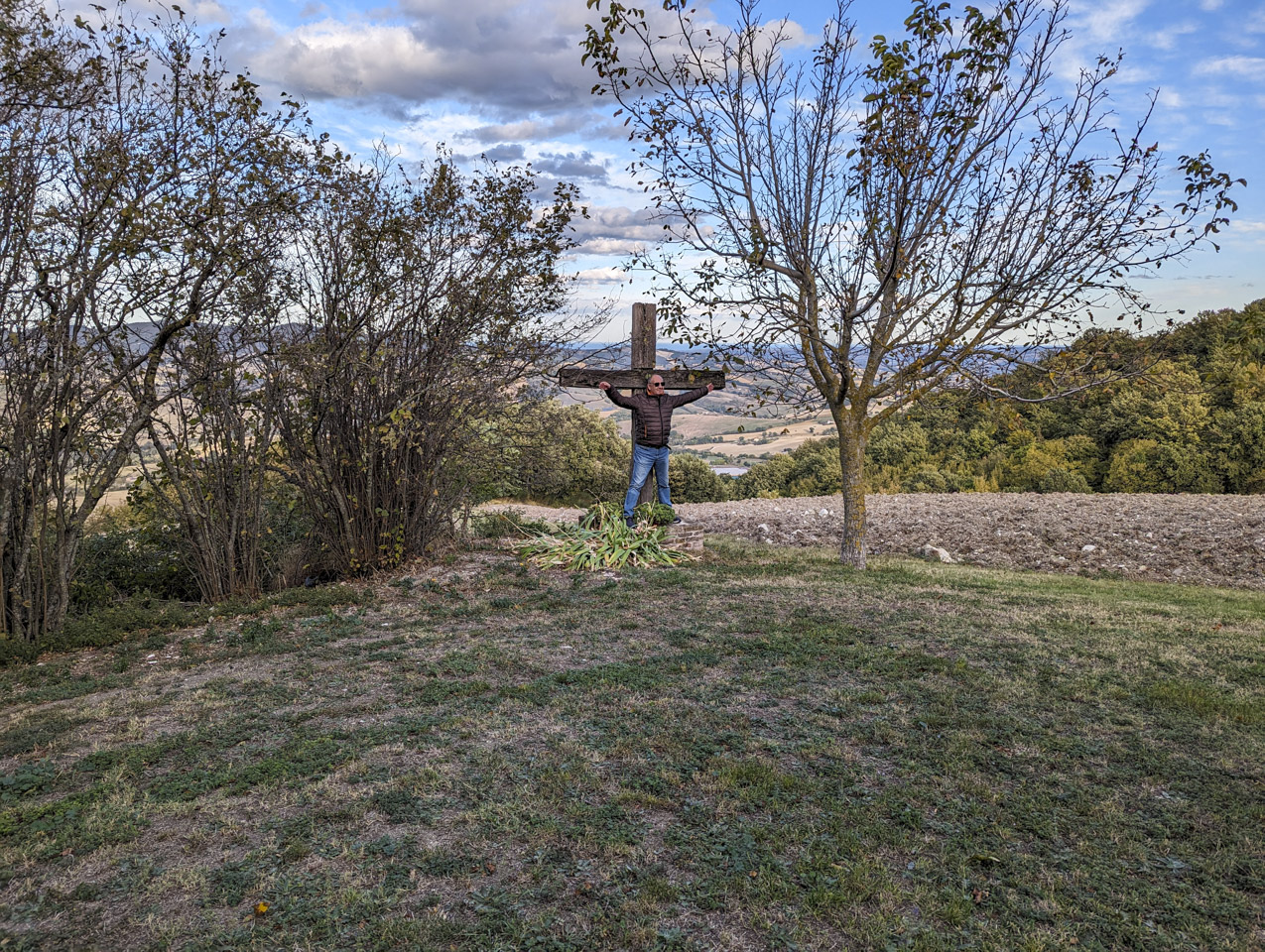
You can see a bit of the landscape behind Francesco in the previous photograph. The monastery is on a hill and provides a commanding view over rolling hills and out to the sea.
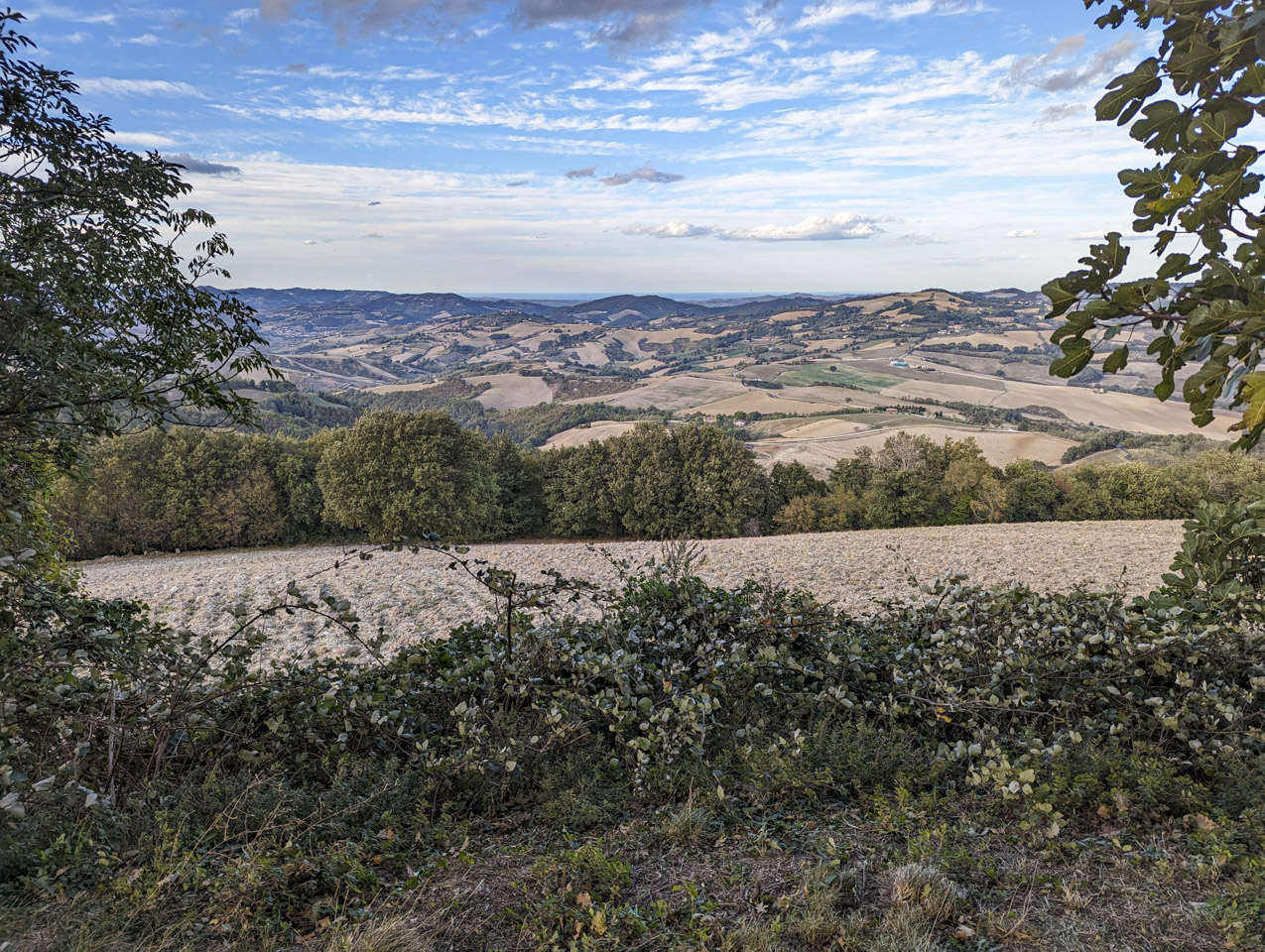
In addition to cypress, there were other interesting trees that we did not identify.
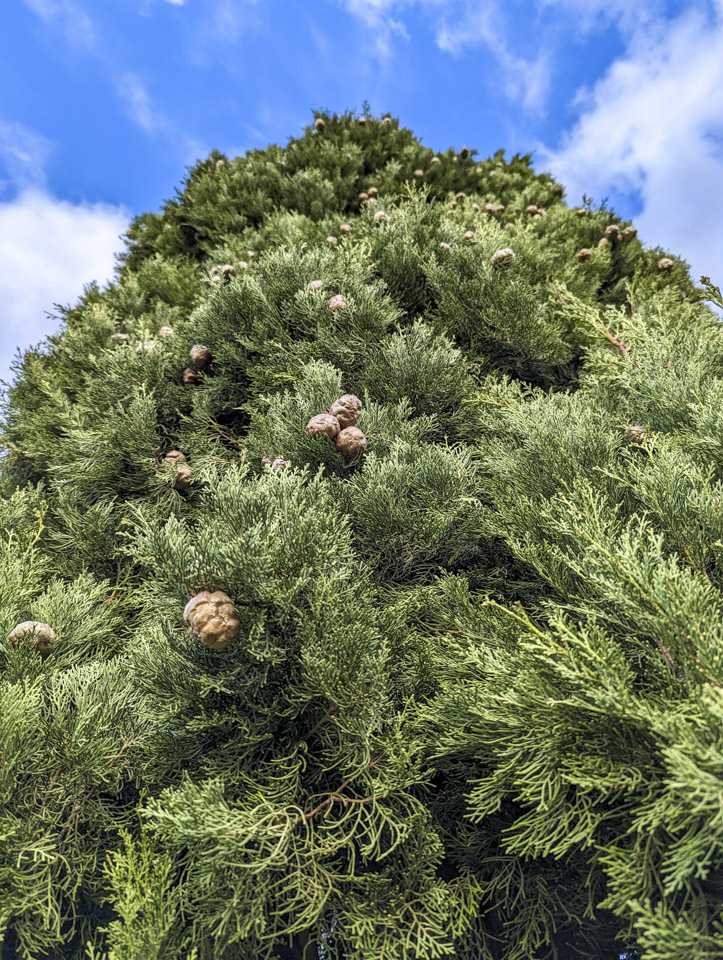

From there we drove to Furlo. You might recall that Furlo has the 'Galleria Romana Del Furlo', a tunnel built in 77 A.D. The road through the tunnel goes through a gorge cut by the Candigliano River, creating high cliffs. Anne, Flo, and Francesco are leaving the scenic vista pull-off and walking down Via Flaminia. In the next photo you can see the road looking very narrow next to the broad river.


Yes, the water here is very green, most likely from dissolved minerals. Across the river is a cave that the river has created in the side of the mountain.

The sun was getting close to setting. Being deep in the gorge between the mountains, the sun's golden light shining on top part of the eastern mountain shows how the mountain on the west side of the gorge was blocking some of the light.

We were not getting much direct light by this point.

There were some other people enjoying the area with us. The people furthest left in this photograph are Francesco, Anne, Doni, and Flo. But what are the women looking at?

They are looking at pretty pink clouds.
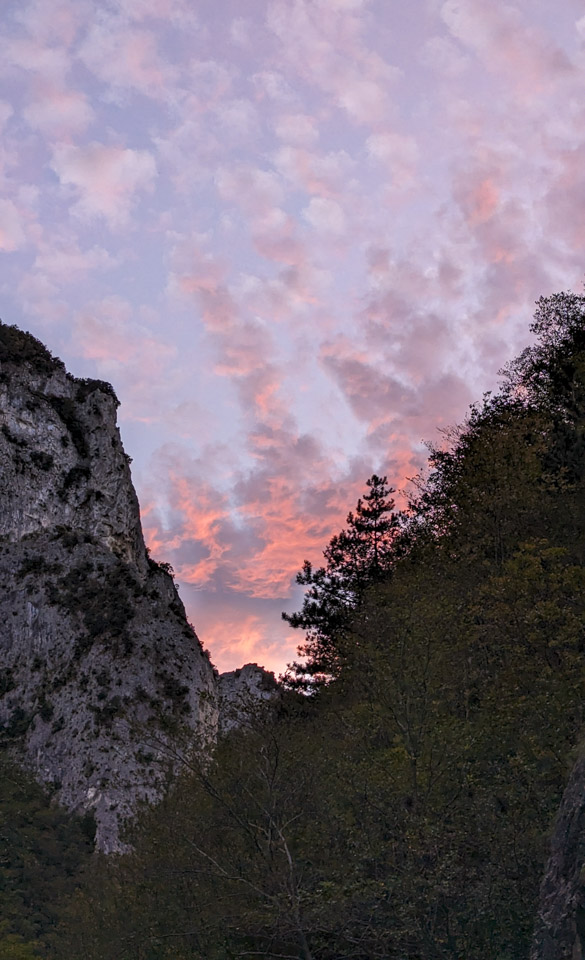
All Souls' Day ('Commemorazione dei defunti') is fairly important in Italy, and cemeteries are busy places this time of year. Any cemetery of decent size will have a flower vendor there. You might recall that Italian cemeteries are very different than American ones. The majority of graves are above ground in community mausoleums, and after a set number of years (which varies depending on the cemetery) the bodies are moved to smaller tombs (ossuaries) and / or combined with other relatives in the same tomb. Since we were there the week of All Souls' Day, we visited some cemeteries both to honor the deceased and also to see if we could find any graves that looked like they might be relatives. We have included a picture from the cemeteries that we visited, for our own reference.
Fano, being a relatively large city, has a large cemetery. There are some graves, mostly newer, that are outside.
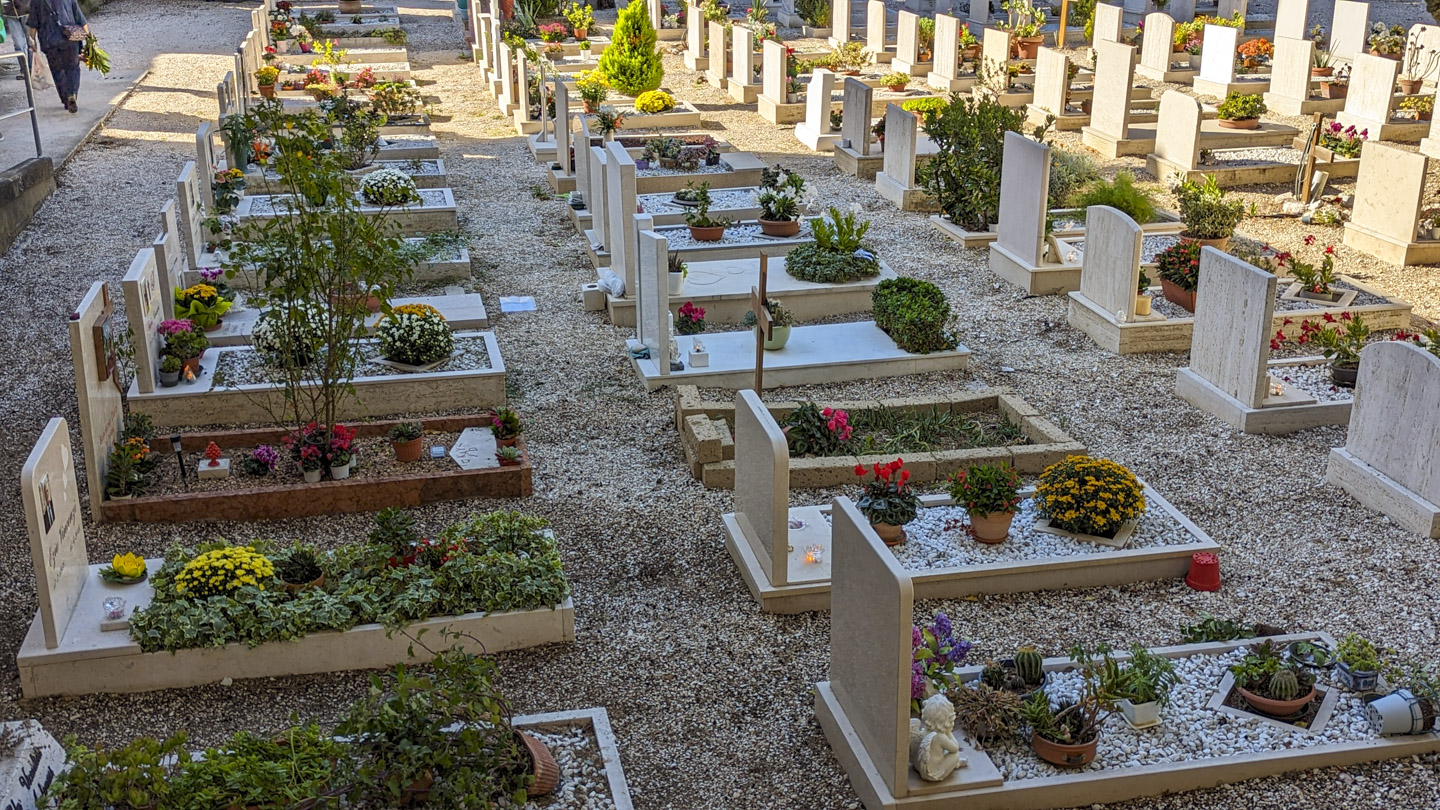
But most of the graves are in the walls of the buildings. There are many long walls with 6 levels each.

There are ladders that can be rolled around to access the higher layers. Here Doni is cleaning the tomb of Tina and Tina's father, Florindo.
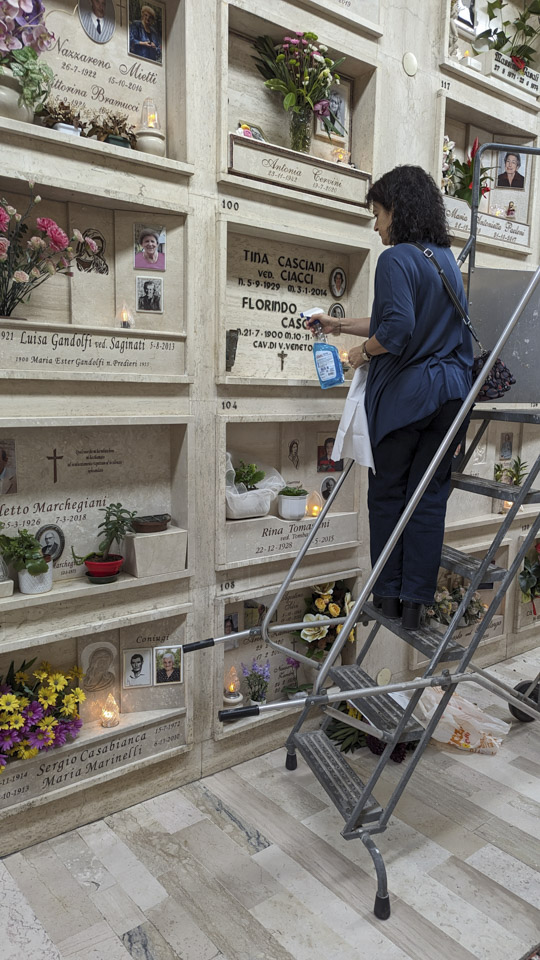
After cleaning the surface, Doni put pretty fresh cut flowers in the little vase that is attached to the wall. This tomb is an example of the combined option, and has both Florindo's (Francesco's grandfather) and Tina's (Francesco's aunt) remains.

Francesco's mother Lina is nearby.

In a different area of the cemetery is Francesco's father. It is not unusual to have family members in different areas, depending on what was available at the time. Sometimes, they will move the tomb later if a spot opens up due to other moves. Francesco's grandmother is in this same tomb. It sounds like she was an amazing and strong woman.

In our wanderings, we stopped at a cemetery in Cartoceto, one of the Marche villages. You will see that this wall of tombs is substantially smaller than the one shown above from Fano.

Francesco and Doni brought us to Monteguiduccio and Monteguardio, but we did not find any Diotalevi relatives in those locations. In Monteguiduccio we did see relatives from Doni's family (Urbinelli).


In Monteciccardo we found Domenico Bertini's tomb. He is Paul's great-great-grandfather. We were there with Alizia Amadori, Paul's second cousin once removed. Domenico is her Great-grandfather. We do not know Bruno, who died when he was 2 years old. Our guess is that he is a child of Domenico that we do not have shown on the family tree. (We met Alizia in 2018; there will be pictures of her later in this Italy trip report.)

We also went to the Sant'Angelo in Lizzola cemetery. Although we did not find any tombs of known Diotalevi relatives, we did see Renato Diotalevi's tomb. He is the last Diotalevi that we know of who had lived in Sant'Angelo, but we do not know what his relation would be to Paul's family. Doni's family knew Renato (she is from Sant'Angelo).

The view from the Sant'Angelo cemetery is peaceful.
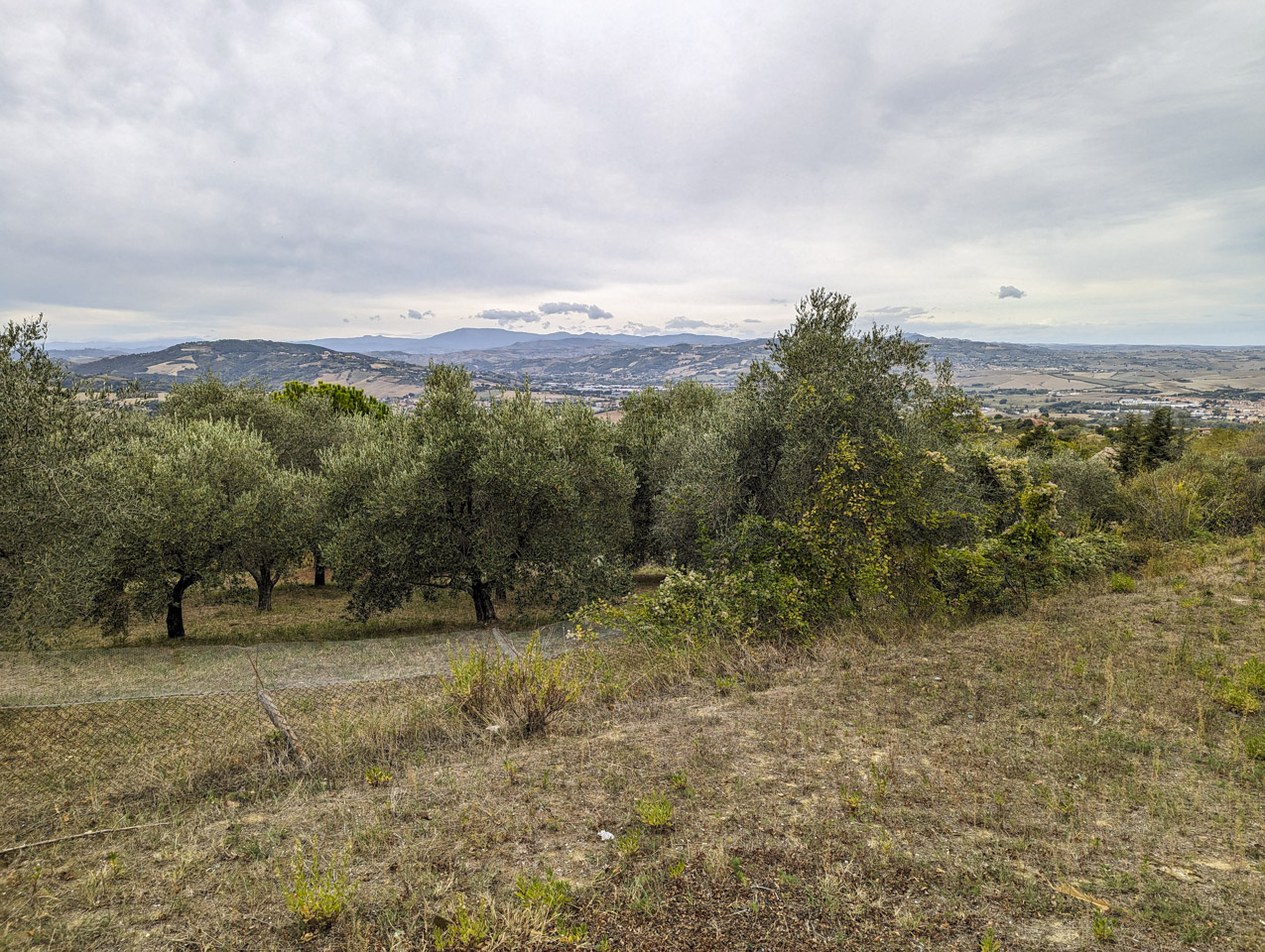
map of this page's locations (other than the cemeteries)
Updated September 2024